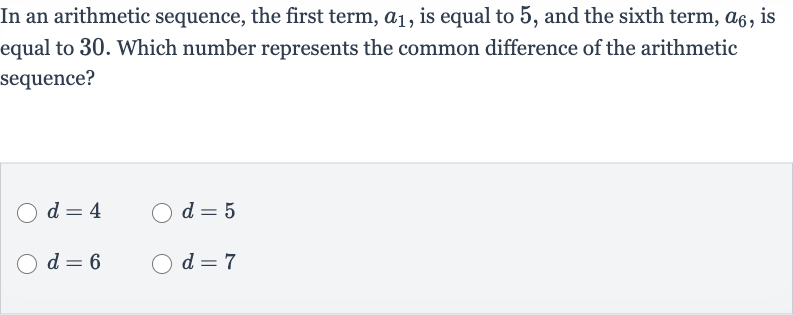Full solution
Q. In an arithmetic sequence, the first term, , is equal to , and the sixth term, , is equal to . Which number represents the common difference of the arithmetic sequence?
- Given terms: We are given the first term of an arithmetic sequence, , and the sixth term, . We need to find the common difference, , of the sequence.
- Arithmetic sequence formula: The th term of an arithmetic sequence can be found using the formula , where is the first term and is the common difference.
- Express sixth term: We can use the formula to express the sixth term: .
- Substitute values: Substitute the given values into the equation: .
- Solve for d: Solve for d: implies , so .
- Final common difference: Divide both sides by to find : , which gives us .

